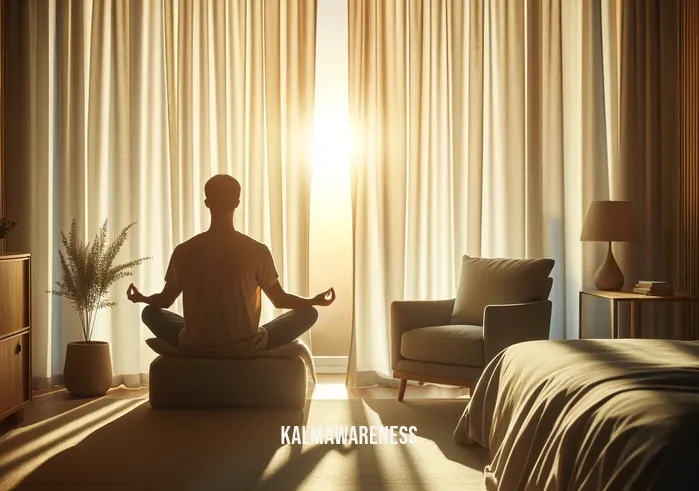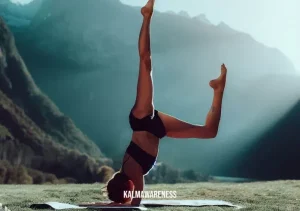Time to Pause: Understanding the Need for Relaxation and Mindfulness in our Daily Lives
In our fast-paced, always-on world, the phrase “time to pause” has never been more crucial. It embodies a call to step back, to take a break, to practice mindfulness, and to allow our minds and bodies to rest and refresh. This introductory segment sets the foundation, emphasizing the pivotal role of relaxation, breaks, mindfulness, rest, and the profound techniques like breathing and meditation. Through a deep dive into these categories and practices, the subsequent segments will explore how you can effectively incorporate them into your routine, ensuring a more balanced and harmonious life.
The Inherent Need to Slow Down
It’s no surprise that our modern lifestyle often leaves us feeling overwhelmed and exhausted. The onslaught of information, responsibilities, and expectations can feel relentless. But what if there was a simple solution to alleviate this stress? Enter the concept of mindful movement sleep. This unique approach helps individuals connect with their inner selves, find a rhythm, and achieve restful sleep.
Embracing Breaks and Power Naps
The idea of taking a break can sometimes be seen as a sign of weakness or laziness in our productivity-driven society. However, numerous studies highlight the undeniable benefits of short pauses, like the rejuvenating 15-minute power nap. It’s more than just a momentary lapse into sleep; it’s a strategic pause that can enhance cognitive abilities and boost energy levels.
Mindfulness and Its Multifaceted Benefits
At the core of the “time to pause” philosophy is mindfulness. But what does it truly entail? Mindfulness involves attaining a peaceful state of mind in which thoughts are not occupied by worry. It’s about being present in the moment, embracing the now, and grounding oneself. Such a practice often incorporates elements like EMDR meditation, which can offer therapeutic benefits and deepen the mindfulness experience.
Starting Small: Simple Meditation Techniques for Everyone
One might wonder, “Is meditation complex?” or “Do I need to sit in a specific posture to meditate?”. The beauty of meditation is its versatility. Whether you’re practicing meditation lying down or exploring the element of some meditation exercises, there’s something for everyone. For beginners, resources like Jack Kornfield’s meditation guide can be invaluable.
The Road Ahead: Navigating the Journey of Mindful Living
Adopting the mantra of “time to pause” doesn’t just mean infusing relaxation and mindfulness techniques into your life; it’s also about understanding the deeper implications of each action. From understanding the meaning behind phrases we often use to the physiological effects of certain frequencies like the 256 Hz benefits, the journey of mindful living is both intricate and enlightening.
As we delve deeper into the topic in the subsequent segments, we’ll uncover the various nuances of relaxation, from the benefits of practices like rouse yoga to the importance of sustainable self-care. We’ll also address the various myths surrounding relaxation techniques and how to tailor them to meet individual needs.
To truly appreciate and understand the art and science of taking a break, it’s vital to immerse oneself in the vast sea of knowledge, anecdotes, and experiences that surround it. Whether you’re someone looking for ways to infuse short breaks into a busy day, a professional seeking to promote a balanced lifestyle, or simply a curious mind, the subsequent segments promise a wealth of knowledge.
So, as we take our first step into this profound journey, remember the essence of our exploration: Time to pause, breathe, and embrace the present. Continue reading, and let’s embark on this enlightening journey together.

The Nuances of ‘Time to Pause’: Beyond the Basics
The simple act of pausing can unravel a world of benefits, far-reaching impacts, and novel perspectives. In this chapter, we will dive deeper into the essence of ‘time to pause’, shedding light on its different dimensions, its multifaceted importance, and practical ways to incorporate it into our daily life. With structured lists and a comprehensive table, we’ll explore the more profound elements of taking intentional breaks.
Why “Time to Pause” is Essential
While the previous chapter touched upon the foundational aspects, let’s explore some reasons why incorporating pauses is vital:
- Physical Revitalization: Moments of rest, such as the 15-minute power nap, contribute significantly to bodily rejuvenation.
- Mental Clarity: By setting aside tasks momentarily, our brain gets the chance to process and declutter, leading to improved focus.
- Emotional Well-being: Taking a break can offer the necessary space to process emotions, helping in understanding and addressing feelings like stress or anxiety.
- Enhanced Productivity: Contrary to popular belief, taking breaks can boost productivity. By preventing burnout and maintaining high energy levels, work output remains optimal.
Techniques to Incorporate ‘Time to Pause’
- Guided Meditation: Consider starting with techniques like Jack Kornfield’s meditation for beginners.
- Body Awareness Activities: Paying attention to different parts of the body, perhaps starting with practices like touching that specific body part, can lead to heightened body awareness.
- Routine Alterations: Something as simple as teenagers walking instead of using electronic means of transport can incorporate mindful pauses.
- Mindful Hypnobirthing: This technique, as discussed on kalmawareness, is a beautiful way to integrate mindfulness and relaxation, especially during significant life events.
Comparative Table on ‘Time to Pause’ Techniques
| Technique | Duration | Benefits |
|---|---|---|
| Guided Meditation | 10-30 minutes | Enhanced focus, stress relief |
| Body Awareness Activities | 5-15 minutes | Increased body-mind connection, grounding |
| Routine Alterations (e.g., walking) | Varies | Physical exercise, mindfulness practice, reduced screen time |
| Mindful Hypnobirthing | Duration varies | Calmness during childbirth, strengthened mother-child bond |
| EMDR Meditation | 15-45 minutes | Therapeutic benefits, trauma processing |
Expanding Horizons
Incorporating ‘time to pause’ in our lives is more than just a practice; it’s a lifestyle change. While we’ve explored the importance and techniques, understanding its deeper meaning is essential. The phrase how we get deep so fast resonates with the very idea of taking a momentary pause yet plunging into profound relaxation or reflection. Similarly, comprehending the judgement of the wise offers insights into how experienced individuals value and incorporate these pauses.
Gearing Up for More
As we’ve seen, the essence of ‘time to pause’ isn’t just about physical relaxation; it’s an expansive philosophy that encompasses mental tranquillity, emotional balance, and overall well-being. In the next chapter, we’ll delve even deeper, uncovering the profound impacts of these practices on various aspects of our lives. From scientific findings to experiential anecdotes, the journey into understanding ‘time to pause’ continues. Stay with us as we uncover more layers, providing you with tools and knowledge to lead a more harmonious life.

Drawing Hope from the Pause
In the fast-paced world we live in, finding solace and inspiration from the simple act of pausing might seem counterintuitive. Yet, countless individuals have discovered hope and rejuvenation from these moments of stillness. In this chapter, we’ll traverse the paths of those who’ve embraced the “time to pause,” gleaning lessons and drawing hope from their experiences.
Resounding Echoes: Voices of Hope
Throughout history, thinkers, leaders, and everyday individuals have espoused the value of taking a moment to simply be. Let’s hear from a few:
- Leonardo da Vinci once said, “Every now and then go away, have a little relaxation, for when you come back to your work, your judgment will be surer.”
- Ovid, the renowned Roman poet, noted, “Take rest; a field that has rested gives a bountiful crop.”
- Anne Lamott, in her wisdom, penned, “Almost everything will work again if you unplug it for a few minutes, including you.”
Each of these voices, though from different eras and backgrounds, converge on the simple truth of the value embedded in pauses.
Stories That Resonate: Real-life Testimonies
Sarah’s Journey with Mindful Movement Sleep: Struggling with chronic insomnia, Sarah found solace in the practice of mindful movement sleep. It wasn’t just about the physical act but the intention behind the pause, allowing her to sync her mind and body, resulting in restorative sleep.
Jason’s Experience with Rouse Yoga: As a high-flying executive, Jason rarely found time to rest. His discovery of Rouse Yoga wasn’t just about flexibility but about the pauses between poses, the breaths that allowed him to reflect and find clarity amidst chaos.
Marie and the Element of Meditation Exercises: A mother of three, Marie found moments of peace in incorporating elements of meditation into her hectic schedule. These brief pauses became her sanctuary, leading her to a more mindful approach to life.
The Reverberating Benefits
Beyond individual stories, the sustainable self-care movement is gathering momentum. People globally are recognizing the importance of integrating “time to pause” not as an occasional luxury but a necessary rhythm of life. From the health benefits seen with practices like tuning into 256 Hz for relaxation to understanding the profound depth reached during meditation as explained in how to spell stabilize, the inspirations are boundless.
A Collective Consciousness
The judgment of the wise and the everyday experiences of people like Sarah, Jason, and Marie converge on a single truth: the world might demand relentless hustle, but our soul craves the “time to pause.” These moments aren’t about inactivity but active rejuvenation, reflection, and connection.
Looking Ahead
With real-life testimonies, historical quotes, and global movements championing the essence of pause, it’s evident that this practice is far from a passing trend. It’s a lifeline, a source of inspiration, and a beacon of hope. As we continue our exploration in the next chapter, we’ll delve into the practicalities – offering actionable insights and techniques to make “time to pause” an integral part of our daily lives.
@
The Mechanics of Pause: Unpacking its Essence
The concept of taking a “time to pause” may seem straightforward at first glance. Still, as with many things in life, it’s the layers underneath that hold the true treasure. In this chapter, we’ll deconstruct the nuances of this simple yet profound act, shedding light on its various facets.
Understanding the Whys
To truly embrace a concept, it’s essential to grasp the reasons behind it. Here are some compelling reasons why incorporating pauses in our life can be transformative:
Mental Clarity: Distancing from continuous stimuli helps in gaining clarity, similar to the way EMDR meditation aids in processing traumatic memories.
Physical Rejuvenation: Just as our body benefits from a 15-minute power nap, regular short breaks can boost our energy and productivity.
Emotional Balance: Pausing can serve as a grounding mechanism, much like the centering exercises in mindful hypnobirthing.
Spiritual Connection: Moments of pause can become gateways to deeper spiritual experiences, akin to Jack Kornfield’s meditation techniques for beginners.
The Hows: Techniques to Pause
It’s one thing to know the benefits, and another to know how to incorporate them. Here’s a brief guide:
Micro-Pauses: These are short breaks, lasting just a few seconds to a few minutes. Examples include:
- Deep breathing exercises.
- Stretching your limbs.
- Enjoying a sip of water while truly savoring its refreshment.
Mini-Pauses: Ranging from 5 to 30 minutes, these are slightly longer breaks. Some activities to consider:
- Taking a mindful walk.
- Engaging in a short meditation session.
- Reading a passage from a book that calms your mind.
Extended Pauses: These can last for several hours or even days. Examples comprise:
- Weekend retreats.
- Digital detox sessions.
- Extended meditation or mindfulness sessions, perhaps exploring practices like meditation made simple.
The Misconceptions
There are certain myths surrounding the idea of pausing. Let’s address a few:
Only for the Spiritual: Pausing is for everyone, regardless of their spiritual beliefs. From teenagers finding solace in mindful walking to executives harnessing the benefits of short power naps, it’s universally beneficial.
Waste of Time: Contrary to this belief, pausing can actually enhance productivity. As we’ve seen, moments of rest can lead to greater clarity and energy.
Requires Special Settings: One doesn’t need to be atop a mountain or in a serene forest to pause. Even in bustling urban settings, techniques like lying down meditation can be practiced.
Gearing Up for Conclusion
With a deeper comprehension of the mechanics of pausing, it’s evident that it isn’t merely a luxury or trend—it’s a necessity. As we gear up for our concluding chapter in the next segment, we’ll weave together all that we’ve learned, presenting a cohesive understanding of why it’s high time for all of us to embrace the “time to pause.”
@
Reflecting on the Power of Pause
As we find ourselves at the culmination of this exploration into the “time to pause,” it’s essential to take a moment to reflect upon the journey we’ve undertaken. Just as with life’s many adventures, it’s not merely about the destination but the path we tread, the insights we garner, and the perspectives we reshape.
The Journey Thus Far
Our expedition into the world of pausing allowed us to unearth multiple layers beneath a seemingly straightforward concept. We’ve explored how pausing is more than just a physical respite—it’s a mental, emotional, and even spiritual retreat. Through the lens of practices such as Rouse Yoga and the tranquility that can be harnessed from sustainable self-care, we’ve seen firsthand the rejuvenation that can be achieved.
Key Takeaways
A few insights stand out as we glance back:
Pausing is not a luxury; it’s a necessity. Whether it’s through stabilizing your thoughts or understanding the element of meditation exercises, it’s clear that taking time off is crucial for overall well-being.
Everyone, irrespective of age, profession, or beliefs, can benefit from it. As we’ve seen, teenagers to executives, from the spiritually inclined to the skeptics, all can find solace in these moments of respite.
The methods to pause are as varied as individuals. Whether you’re inclined towards deep sonic meditation at 256 Hz or find peace in daily reflections, there’s a technique tailored for you.
The Road Ahead
While our deep dive into the essence of pausing concludes here, it’s but a single chapter in the ever-unfolding narrative of self-awareness and personal growth. Our magazine is teeming with more insights, tips, and journeys similar to the one we’ve just undertaken. Consider revisiting previous sections for a refresher or diving deep into other topics that pique your interest.
A Note of Gratitude
Thank you, dear reader, for accompanying us on this enlightening expedition. Your engagement, curiosity, and quest for knowledge are what fuel our endeavors. As we always say, it’s not just about the knowledge we impart but the community we build along the way. Do stay tuned for more insightful content in our future editions. Here’s to many more shared journeys and discoveries!
Until then, remember to always find your “time to pause,” to reflect, rejuvenate, and realign. Your well-being is worth every second.



